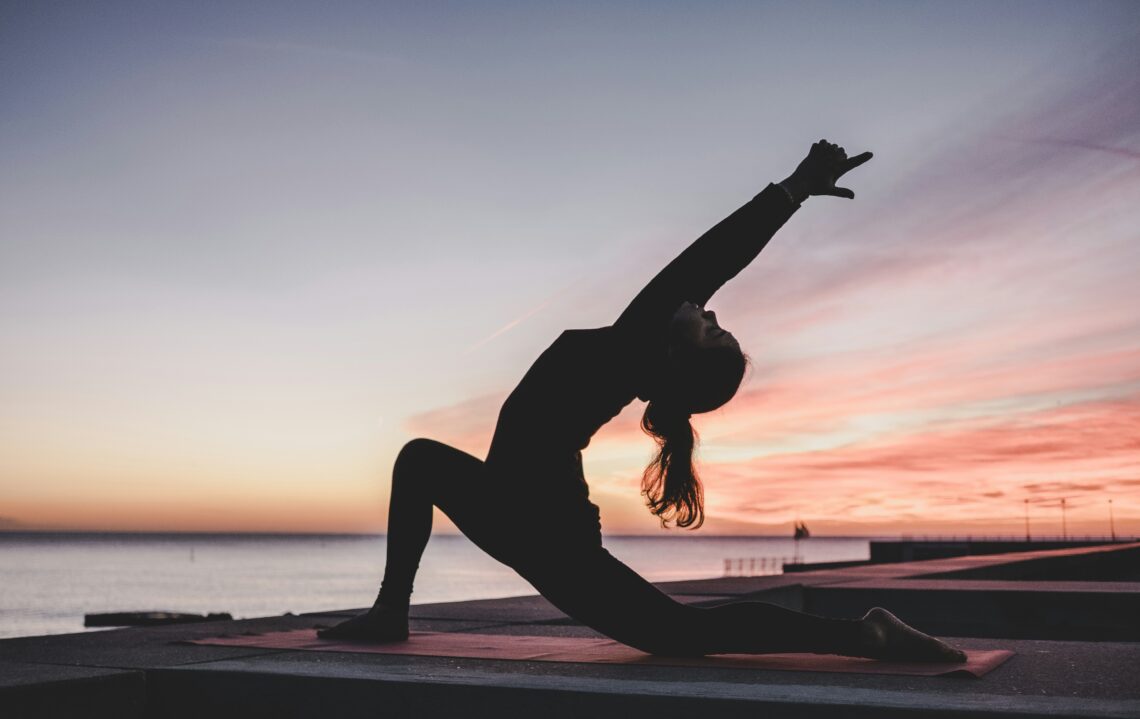Unlocking the Power of Mindfulness for a Healthier Life
In today’s fast-paced world, where distractions lurk around every corner—be it the ping of a smartphone or the urgent demands of work—it’s easy to forget the simple act of being present. Have you ever found yourself scrolling through social media while absentmindedly munching on a snack, only to realize you’ve eaten half the bag without even tasting a single bite? (Ahem, guilty as charged.) This is where mindfulness comes into play, offering a refreshing antidote to the chaos of modern living.
The Essence of Mindfulness
Mindfulness, at its core, is about cultivating a state of awareness and presence in the moment. It’s the practice of tuning into your thoughts, feelings, and bodily sensations without judgment. Sounds simple, right? Yet, many of us struggle with it. I remember my first attempt at mindfulness meditation—it involved a lot of fidgeting and a not-so-subtle battle with my racing thoughts. But as I persisted, I discovered a profound shift in my perspective.
Historical Context
The roots of mindfulness can be traced back to ancient Buddhist traditions, where it was used as a tool for spiritual development. However, in recent decades, it has gained traction in the West as a secular practice. Researchers like Jon Kabat-Zinn have played pivotal roles in introducing mindfulness to a broader audience, illustrating its benefits through scientific studies. (Who knew that a practice with such ancient origins could have such modern-day implications?)
Why Mindfulness Matters
So, why should you care about mindfulness? Well, the benefits are as enticing as a slice of cheesecake at a birthday party (and, trust me, I love cheesecake). Numerous studies suggest that mindfulness can:
- Reduce stress and anxiety levels.
- Enhance emotional regulation and resilience.
- Improve focus and concentration.
- Promote overall well-being and life satisfaction.
In fact, a significant number of people report feeling less overwhelmed and more balanced after incorporating mindfulness into their daily routines. Imagine having the ability to approach life’s challenges with a clearer mind and a more open heart. Sounds nice, doesn’t it?
Scientific Insights
While the anecdotal benefits are compelling, the scientific community has been busy backing them up. Research has shown that mindfulness practices can physically alter the brain’s structure. For instance, studies using MRI scans have indicated that regular mindfulness practitioners exhibit increased gray matter density in areas associated with learning, memory, and emotional regulation. (That’s right—your brain can actually get a workout!)
Getting Started with Mindfulness
So, how does one embark on this mindfulness journey? Spoiler alert: there’s no one-size-fits-all approach. Here’s a roadmap to help you navigate your way:
1. Start Small
You don’t need to meditate for hours on end to reap the benefits. Begin with just five minutes a day. Find a quiet place (preferably without the temptation of a Netflix binge nearby) and focus on your breath. Inhale deeply, exhale slowly. Repeat. It’s that simple. I remember when I first tried this; I set a timer on my phone like a pro, only to find myself racing through my thoughts instead of savoring the stillness.
2. Incorporate Mindfulness into Daily Activities
Mindfulness isn’t limited to formal meditation sessions. You can practice it while washing dishes, walking, or even eating. For example, try savoring each bite of your food instead of mindlessly inhaling it. (I can almost hear the sighs of my fellow snackers!) Engaging fully with these mundane tasks can transform them into moments of joy.
3. Use Guided Meditations
If you’re unsure where to start, consider using guided meditations. There are countless apps available (thank you, technology!) that offer a range of programs tailored for beginners to advanced practitioners. Take advantage of these resources, and don’t be afraid to experiment with different styles until you find what resonates with you.
Mindfulness in Action: Real-Life Examples
Let’s take a moment to explore how mindfulness can be applied in various contexts. Consider the workplace—a notorious hotspot for stress. Many companies have started incorporating mindfulness programs to improve employee well-being. For instance, Google offers courses on mindfulness and meditation, recognizing the importance of mental health in enhancing productivity. (Now, if only they could figure out how to eliminate those endless meetings!)
Mindfulness in Sports
In the realm of sports, mindfulness plays a crucial role in enhancing performance. Athletes like NBA star Kobe Bryant and tennis legend Novak Djokovic have openly shared how mindfulness techniques helped them stay focused and composed under pressure. I mean, can you imagine trying to sink a free throw with thousands of eyes watching? (No thanks!) Mindfulness allows athletes to embrace the moment and perform at their best, even in the face of overwhelming stakes.
Overcoming Challenges in Mindfulness Practice
Let’s be real—mindfulness isn’t all sunshine and rainbows. It can be challenging, especially when you’re first starting out. You might feel restless or frustrated, and that’s perfectly normal. I remember wanting to give up after my third attempt because my mind wouldn’t stop jumping from one thought to another like a kid in a candy store. But here’s the thing: the key is to approach these challenges with compassion and patience.
Common Obstacles
Some common obstacles you might face include:
- Restlessness: Your mind might want to wander, and that’s okay. Acknowledge the thoughts and gently bring your focus back.
- Self-judgment: It’s easy to be hard on yourself for not “doing it right.” Remember, there is no right or wrong way to practice mindfulness.
- Time constraints: Life gets busy. But even a few minutes of mindfulness can make a difference. Think of it as a mini-vacation for your brain.
Mindfulness and Mental Health
One of the most significant areas where mindfulness has made an impact is mental health. Research suggests that mindfulness practices can help alleviate symptoms of anxiety, depression, and stress-related disorders. In fact, some therapists now incorporate mindfulness techniques into their treatment plans. (Imagine discussing your feelings while sipping a warm cup of tea and focusing on the sound of the kettle—that sounds cozy, right?)
Mindfulness-Based Stress Reduction (MBSR)
One of the most well-known mindfulness programs is Mindfulness-Based Stress Reduction (MBSR), developed by Jon Kabat-Zinn. This eight-week program combines mindfulness meditation and yoga to help individuals manage stress and enhance emotional resilience. Participants often report feeling more connected to their bodies and better equipped to handle life’s challenges. (If only they could provide free snacks too—now that would be a win-win!)
Mindfulness and Relationships
Mindfulness also has a remarkable impact on relationships. By being present and fully engaged with our loved ones, we can foster deeper connections and understanding. Think about it: how many times have you had a conversation with someone while your mind was somewhere else—perhaps contemplating what to have for dinner? (I’m looking at you, multitaskers!) Practicing mindfulness can help us truly listen and respond with empathy.
Mindful Communication
Mindful communication involves approaching conversations with openness and curiosity. It means actively listening, rather than waiting for your turn to speak. This approach can lead to more meaningful exchanges and can even resolve conflicts more effectively. Imagine resolving a disagreement without raising your voice—sounds almost too good to be true, right?
Creating a Mindfulness Routine
To make mindfulness a lasting part of your life, consider creating a routine. Consistency is key, and developing a habit can yield significant benefits over time. Here are some tips to help you establish a mindfulness routine:
1. Set a Specific Time
Choose a specific time of day that works for you, whether it’s morning, lunch, or before bed. (I’ve found that mornings are best for me—though I still struggle to roll out of bed sometimes!)
2. Create a Dedicated Space
Find a quiet space where you can practice mindfulness without interruptions. It could be a cozy corner in your home or even a local park. I once tried meditating in my living room, only to be interrupted by the neighbor’s dog barking like it was auditioning for a role in a movie.
3. Track Your Progress
Consider keeping a mindfulness journal to track your thoughts and experiences. This can help you reflect on your journey and notice any changes in your mindset over time. (Plus, there’s something oddly satisfying about writing things down—like crossing items off a to-do list!)
Mindfulness Resources
If you’re eager to dive deeper into the world of mindfulness, there are numerous resources available at your fingertips. Here are a few recommendations:
- Books: “Wherever You Go, There You Are” by Jon Kabat-Zinn is a classic, while “The Miracle of Mindfulness” by Thich Nhat Hanh offers practical insights.
- Apps: Headspace and Calm are popular choices, offering guided meditations and mindfulness exercises.
- Online Courses: Platforms like Coursera and Udemy feature mindfulness courses led by experienced instructors.
Final Thoughts
As you embark on your mindfulness journey, remember that it’s a practice—one that requires patience and self-compassion. There will be days when your mind feels like a runaway train, but that’s all part of the process. Embrace the imperfect moments, and celebrate the small victories along the way.
Ultimately, unlocking the power of mindfulness for a healthier life is about cultivating awareness and connection, both with ourselves and those around us. So, whether you’re sipping tea, taking a stroll, or simply enjoying a quiet moment, embrace the present—it’s where life truly happens.
In the grand scheme of things, mindfulness might just be the key to unlocking a more vibrant, fulfilling existence. And who knows? You might even find yourself enjoying a slice of cheesecake with all your senses engaged—now that would be a deliciously mindful moment!






